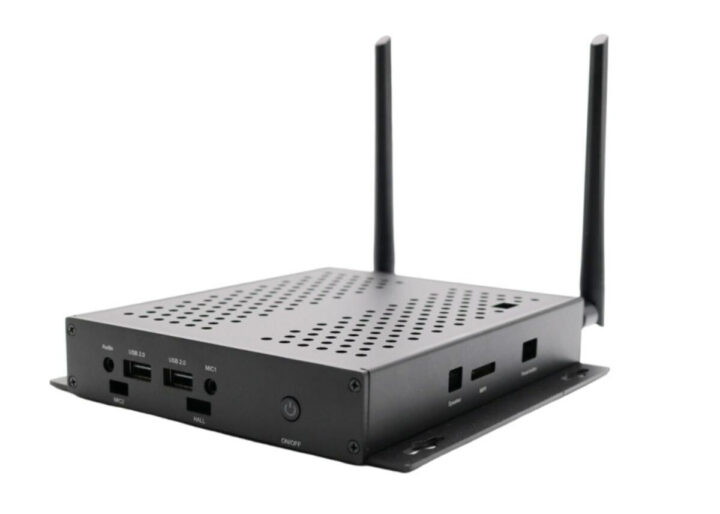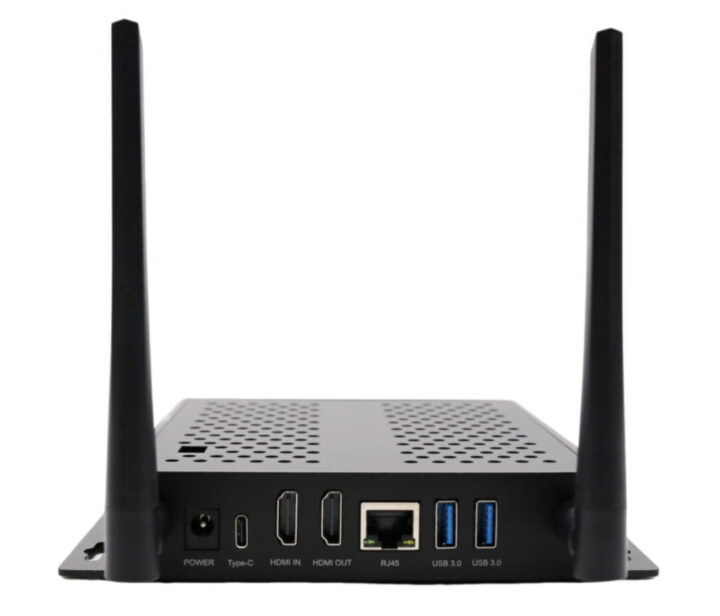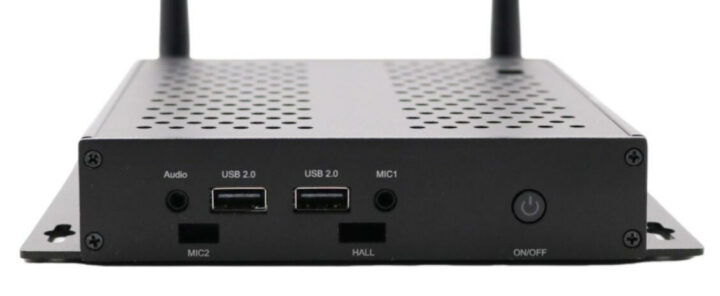Mekotronics LS1200 is a mini PC powered by a MediaTek Genio 1200 (MT8395) octa-core Cortex-A78/A55 processor with a 4.8 TOPS NPU, and especially suited to live streaming applications.
The system, housed in a metal enclosure, is offered with an unspecified amount of LPDDR4x memory and eMMC flash, HDMI input and output, an eDP (Embedded DisplayPort) interface, a Gigabit Ethernet RJ45 port, WiFi and Bluetooth connectivity, and four USB host ports.
Mekotronics LS1200 specifications:
- SoC – MediaTek Genio 1200 (MT8395) octa-core processor with
- CPU – 4x Cortex-A78 cores @ 2.2GHz, 4x Cortex-A55 cores @ 2.2GHz
- GPU – Penta-core Arm Mali-G57 GPU @ 880MHz with support for OpenGL ES 3.2/2.0/1.1, Vulkan 1.1/1.0, OpenCL 2.2,
- AI accelerator – 4.8 TOPS dual NPU with support for TensorFlow and Caffe models
- DSP – HiFi 4 audio DSP
- VPU
- Encoding up to 4Kp60 with H.265/HEVC
- Decoding up to 4Kp90, AV1, VP9, HEVC, H.264 codecs supported
- System Memory – LPDDR4x
- Storage – eMMC
- Video Output
- HDMI 2.0 port up to 4Kp60
- eDP connector and touchscreen interface (accessible from the side of the device)
- Video Input
- HDMI input
- Internal MIPI CSI connector
- Audio – 3.5mm audio jack, 3.5mm microphone jack, built-in microphone
- Networking
- Gigabit Ethernet RJ45 port
- Dual-band WiFi and Bluetooth with 2x external antennas
- USB – 2x USB 3.0 ports, 1x USB type-C port, 2x USB 2.0 ports
- Misc – Power button, Hall sensor
- Power Supply – DC power jack
- Dimensions – TBC (industrial grade aluminum shell)
The system is said to run the Android 11 operating system, but the product description also mentioned it ” supports a variety of operating systems with stable and reliable performance”.
The company did not provide information about pricing and availability, but considering the specifications are not complete and ADLINK’s I-Pi SMARC 1200 development kit, based on the same Genio 1200 processor, is still shown as “preliminary”, the Mekotronics LS1200 is probably not available yet either. A few more details may be found on the product page.

Jean-Luc started CNX Software in 2010 as a part-time endeavor, before quitting his job as a software engineering manager, and starting to write daily news, and reviews full time later in 2011.
Support CNX Software! Donate via cryptocurrencies, become a Patron on Patreon, or purchase goods on Amazon or Aliexpress







